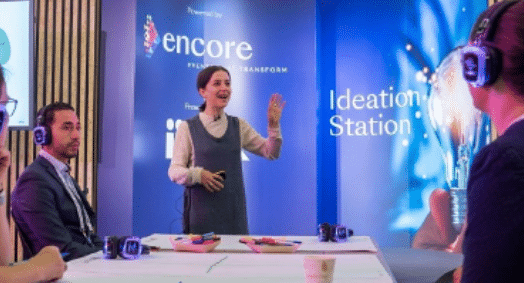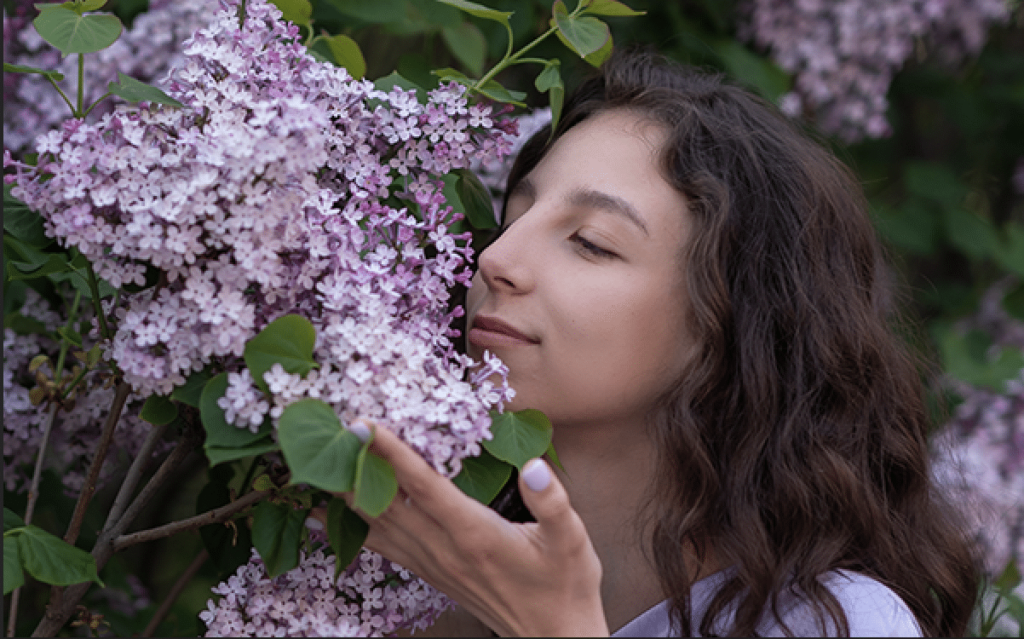Related Posts
Tags
You’ve heard the term ‘immersive experiences.’ But what does that mean? Let’s go beyond the buzzword to look at how you can use cutting-edge and traditional audiovisual (AV) technology to leverage this trend.
What is an immersive experience?
An immersive experience is one that engages one or more senses. It encourages people exposed to the experience to become active participants rather than passive observers. It invites them to relax and engage with their environment in new, more memorable ways.
In an event context, an immersive experience can describe several things. But, at its root, it is an environment that mentally, physically and/or emotionally engages the senses:
- Sight
- Sound
- Smell
- Touch
- Taste
Now that we’ve defined what immersive experiences are, let’s talk about how to create them.

Using light to influence participants' mood
Lighting helps participants connect with each other. When you’re in a darkened theater, you sit back and relax because no one can see you. But when the faces of people sitting around you are visible, you feel connected to their enjoyment of what’s happening. When they cheer or laugh, it’s easy to get swept up into that same joyous feeling. When you choreograph lighting to what’s being presented on stage, you can chart and control the audience’s emotional journey.
Lighting also sets a mood. Being in natural light improves mood and increases happiness. And using LED screens helps you maximize venues with natural light without sacrificing presentation visibility.
Colors affect mood. For example, blue light accelerates the relaxation process, yellow boosts happiness and concentration, white light alleviates depression, and purple light reduces emotional and mental stress. When designing the experience you want participants to have, incorporate color theory into how you light the space.
Let’s not forget other technology that leverages the power of sight. LED screens can transform small spaces like windows to the largest exhibit halls into whatever you want to display. When you add vibrant encompassing visuals to a room, then you can transport guests to other worlds with the push of a button. And closed captioning can assist guests with hearing loss be connected to the message directly
Leveraging sound design to encourage engagement
We’ve grown so used to hearing music when we’re out in public, that when it is absent, that creates a void. The music you select to play at your event is crucial — Creating anticipation for what will come, setting the mood and grabbing participants’ attention. Encore Music provides carefully curated and fully licensed playlists for every occasion and audio clips that can be remixed or used for videos, walk-in music and stingers.
Audio should be used to strategically engage participants in different ways. For example, technicians can surround the audience with sound to totally immerse them in what’s happening. They can move sounds from one side of the room to the other to create a sense of movement, including tracking with what is playing across the screens. The volume and intensity of the sound can be used to drive the event’s storytelling.
Aside from these techniques, there are also tools like directional audio, which provides a focused stream of audio that can only be heard in a specific space. This lets you create activation areas that don’t bleed out into the rest of the event or show floor.

You can also use “silent event” technology like headphones to hold simultaneous sessions in a communal space without interfering with anything else happening there. Don’t forget the power audio narration has to help visually impaired guests engage with experiences they can’t see.
Injecting scents into events

Have you ever noticed how hotel lobbies smell a certain way? Hoteliers leverage olfactory science to influence guest attitudes and mood. This is because our sense of smell is the strongest of the five senses, and the one most tied to memory and emotion. In fact, 75 percent of all daily emotions are generated due to smell.
Scents can be used to add character to a themed environment. Think coconut oil and beaches or lavender and summer gardens. They also enhance taste. That’s why you swirl wine around a glass and smell its ‘nose’ before tasting.
Scents also can influence behavior. A Nike study found that subjects were willing to pay 10 to 20 percent more in scented environments. Lemon scents can increase productivity. Lavender and jasmine scents ease feelings of stress.
Be thoughtful and judicious when you use scent, as some people are highly sensitive or allergic to perfumes. Scents can be infused through the space with atomizers, naturally distributed through floral or food displays or embedded on physical objects, like scented candles or paper.
Engaging audiences with the power of touch
There’s a reason why museums warn visitors not to touch sculptures. People often explore and make sense of the world by touching objects that appeal to them. Watch a baby or toddler and you’ll see how basic this instinct is.

Adults aren’t often encouraged to interact with objects physically, so it creates a fun, playful environment when they are permitted to do so. One way to introduce this into an educational session is to use a throwable microphone, like a Catchbox. These cushy squares eliminate the need for mic runners as audience members can toss the microphone to each other. With some coaching on how to use it, this becomes a fun and engaging way to conduct a Q&A.
Interactive projections and projection mapping can create opportunities for participants to play with the environment or enjoy light competition with each other. These games and experiences can be projected onto flat surfaces, like tables, floors or walls. They can also be projected onto unexpected surfaces, like falling water.
Inviting participants to a moveable feast
When people file into a ballroom for a meal function, they think they know what to expect. Subvert those expectations by creating an immersive experience centered around their sense of taste.

Encore Project Manager Miguel Sanchez used projection mapping to coordinate table-based imagery and meal courses to create a synchronized experience for nearly 400 diners. Every time a different course was served, the entire look and feel of the table shifted along with it to create a different mood around the food. This combination of technology and gastronomy transported guests visually and enhanced their enjoyment of each course.
Putting it all together

When the Make-A-Wish® Southern Florida Chapter wanted to amplify their 27th Annual InterContinental® Miami Make-A-Wish Ball, they partnered with Encore to transform the main dining experience and open auction event into a New York City aquarium with 360 Film and LED walls. A saltwater scent was piped into the room to enhance the illusion. The transitional experience between the opening reception/silent auction and grand ballroom featured a mesmerizing visual ‘supernature’ LED tunnel. The technology allowed the Encore team to quickly flip the grand ballroom and pump music into a new environment for the afterparty. Guests were so thrilled by the immersive experience Encore created that Make-A-Wish raised a record-breaking amount of money — twice as many donations than what was generated the previous year.
The takeaway
Immersive events are more than a buzzword. They’re a way to enhance participants’ event experience by engaging their senses. When thoughtfully done, you don’t need fancy equipment to produce an immersive experience that engages, educates and entertains event attendees in ways that make traditional experiences feel flat.
Ready to try your hand at this trend? Contact Encore to see how we can transform your next event into an immersive experience.
- Harness the evocative power of touch, taste and smell to create multisensory events - January 3, 2024
- Soundscapes of engagement: Leveraging audio technology for memorable events - November 3, 2023
- How to create immersive experiences with event technology - August 2, 2023





Comments